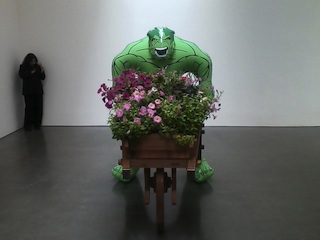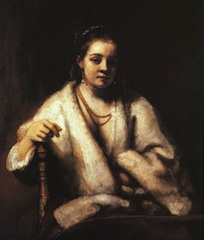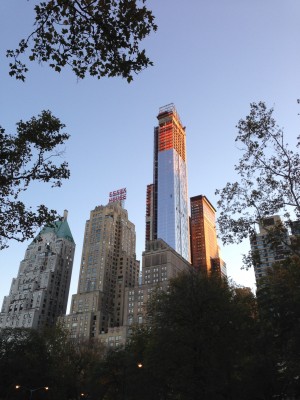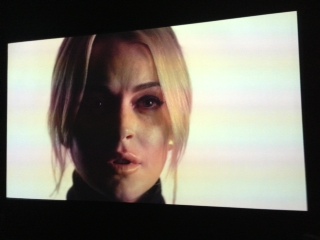- Quotations
- Moloch
- Riddles
- Sport
- Forsaken Edifice
- Etch-A-Sketch
- Wealth
- Action
- Not I
- Coprophagia
- Working Title
- Concepts
- L'Invitation au voyage
- Narrative
-
Neoliberalism and Its Discontents
by le manque
On September 11, 1973—now referred to as the “other 9/11”—Augusto Pinochet staged a successful coup to oust Chile’s democratically elected president, Salvador Allende. Backed by the CIA, American business interests, and the blessings of Henry Kissinger, Pinochet, enlisting economists trained under Milton Friedman and the so-called “Chicago boys,” restructured the Chilean economy in the image of what has now come to be known as “neoliberalism,” that state apparatus which seeks to deregulate markets, privatize formerly public assets, minimize the power of unions, unleash all manner of austerity measures—in short, to ensure, in the name of freedom, an increasingly frictionless flow of capital across borders and into the bank accounts of those in power.
-
Koons Erects another Chuckle
by J.R.
This is probably one of Koons’ minor works at his new solo show at the Gagosian. I don’t know what it is called: “Flower Power”? I always tell people Koons is my favorite artist and it makes them upset. Recently, I tried to defend myself and say that he “always erects something that has an irrefutable presence, and it always makes me chuckle.” And she said, “I think the erection is the problem here.”
-
New Age Culture, or the Metastases of Neoliberalism
by anti-orpheus
-
Museums as the Cathedrals or Mausoleums of Post-Modernity?
by Peaty
(Above Left: St. Peter’s Basilica in Rome / Above Right: MoMA in NYC)While visiting MoMA last Sunday to convene with a small group of friends, I mused upon a recurring inquisition: has the contemporary art museum usurped the church’s position as a surrogate “place of worship”, at least for certain culture-craving demographics?
Aside from the palpable communitarian ethos at a popular museum on any given weekend, such as the Metropolitan, MoMA, or Guggenheim (to name but a few), I am always struck by the flocks who congregate amidst the hallowed halls, quite possibly in search of transcendence, if not the sublime.
-
On the Use and Abuse of Cleavage
by J.R.
“[…W]hat Proust experienced in the phenomenon of remembrance as an individual, we have to experience in regard to fashion.”
–Susan Buck-Morss, The Dialectics of Seeing: Walter Benjamin and the Arcades Project, p. 39
By the end of Walter Benjamin’s life, the concept of ‘the dialectical-image’ became the focal point for his unfinished Arcades Project. The development of this concept began early in his life when he resurrected the value of allegory, distinguishing it from the symbol. Studying baroque theater in The Origin of German Tragic Drama Benjamin writes, “Allegorical personification has always concealed the fact that its function is not the personification of things, but rather to give the concrete a more imposing form by getting it up as a person”
-
“Gum” violence
by anti-orpheus
In an op/ed titled “‘Gums’ control for Bob Costas,” a piece written prior to Friday’s mass shooting, sportscaster Mark Rosen criticized his better-known colleague for a segment aired on Monday Night Football following the Jovan Belcher murder-suicide in which Costas firmly asserted the necessity for gun control.
-
Moloch rears its mangled head above Central Park
by anti-orpheus
Moloch! Moloch! Robot apartments! invisible suburbs! skeleton treasuries! blind capitals! demonic industries! spectral nations! invincible madhouses! granite cocks! monstrous bombs!
They broke their backs lifting Moloch to Heaven! Pavements, trees, radios, tons! lifting the city to Heaven which exists and is everywhere about us!
Call it Frankencrane.
In the midst of Cyclone Sandy’s assault on the Eastern Seaboard, a fifty-ton crane attached to the top of One57—a building slated to be the tallest residential building in Manhattan—partially collapsed under the storm’s powerful winds. For several days it dangled precariously over 57th street
-
Obey
by anti-orpheus






